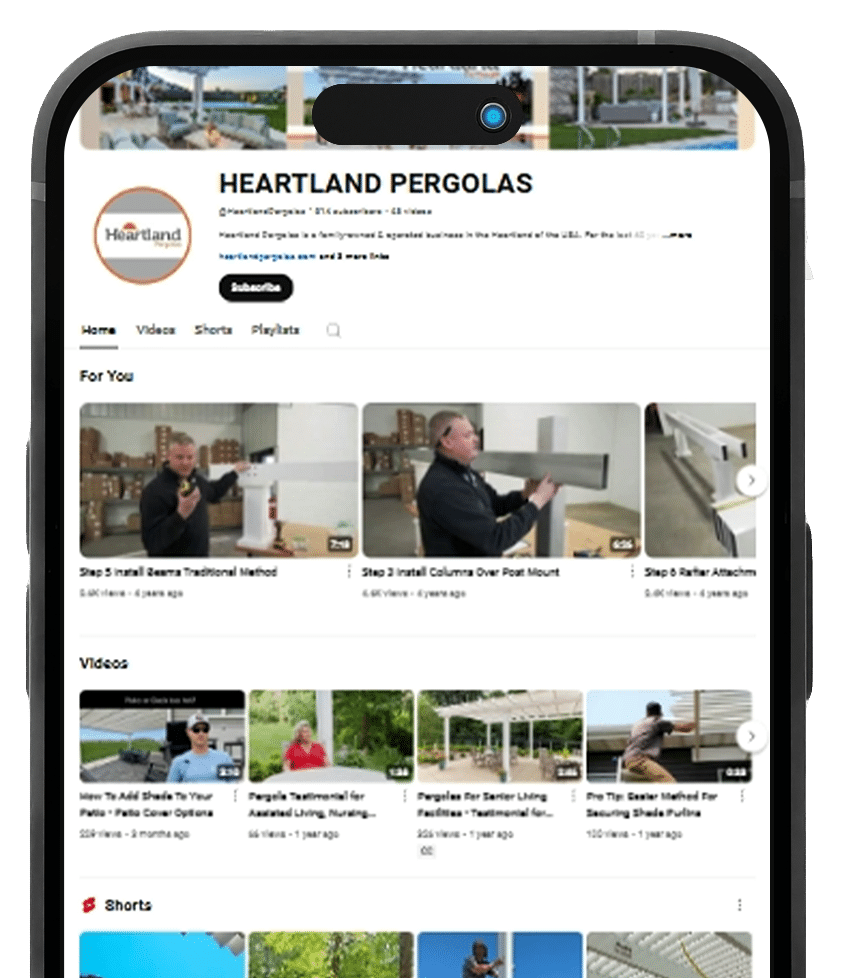Do Pergolas Provide Shade?
Pergolas have been a popular outdoor structure for centuries, offering a stylish and functional space for outdoor living and entertainment. One of the key questions many homeowners have when considering a pergola is whether or not they provide shade and if so, how to cover a pergola for their own home. Let’s explore the role of pergolas and look at some of the different options that are available for creating shade with a pergola.
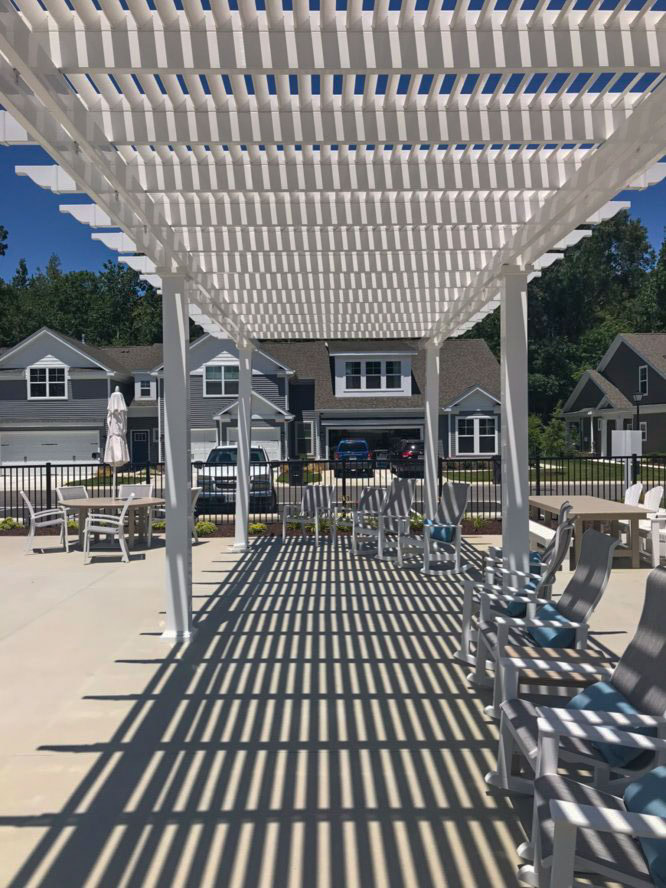
Pool goers can get a break from the sun by resting under a pergola casting shade to the patio below.
First, a historical note, pergolas were not originally designed as a source of shade! Instead, they were created as a decorative element, providing a visually appealing structure for climbing plants to grow on and adding visual interest to garden or outdoor courtyards. The term pergola derives from the Latin word ‘pergula’ which refers to a ‘projecting eave’. However, over time, and as they grew in popularity, many homeowners started to incorporate shade options into their pergolas. Making their pergola both functional and aesthetically pleasing.
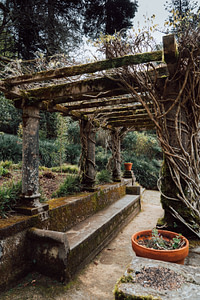
Pergolas were historically found in elaborate gardens & courtyards as decorative elements. Often growing climbing plants or vines.
So, does a pergola provide shade? The answer is yes, but that answer also depends on the design and materials used. Pergolas are typically constructed with open sides and a slatted or lattice type roof. The open roof typically allows light to filter through. The more closely together the slats or lattice weave, the more a pergola can provide some level of shade, but traditionally, many pergolas do not offer great shade coverage. But there are many more options available now, either as the pergola kit itself being designed to create shade or additional items that can be added. The choice of the pergola by a homeowner will determine just how much, or how little shade is created.
How to Shade a Pergola – Pergola Covers
Retractable Canopies: Retractable canopies are a popular option for pergolas, as they provide flexible shade control. These canopies can be easily extended or retracted as needed, and are typically made from UV-resistant materials, such as aluminum or polycarbonate. Higher end pergolas have these as motorized options. Pergolas that have retractable canopies, particularly motorized options, will have the highest price tag of your pergola options.
This carport pergola features a Struxure high end sliding canopy roof which allows the owner to fully control light and rain control.
Shade Cloth: Shade cloth is another option to create more shade for your pergola, and it’s an easy and cost-effective way to add shade. This lightweight, breathable material can be easily attached to the roof of a pergola, and it’s available in a range of colors and transparencies, so you can choose the level of shade that works best for you. Shade cloth is most susceptible to the elements. Sun, rain and wind can all affect longevity, and you may need to purchase new shade cloths every year or every few years.
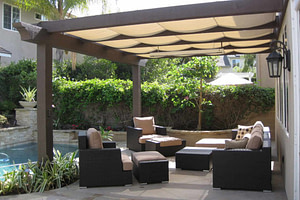
A sun shade is draped over and secured to the pergola to provide shade below.
Plant Cover: For a more natural shade option, consider adding climbing plants to your pergola. Vines and other climbing plants can provide a lush, green canopy that provides shade as it grows and visual interest. It does take a little more maintenance than other forms of shade. Caring for your growing plants, cutting back at the end of season and then starting new the next season will all take a little more time.
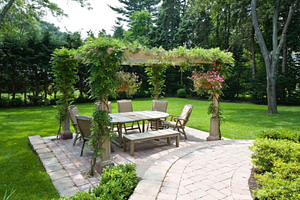
Black Eyed Susan vine climbs up the pergola posts and extends over the top canopy to create shade below.
Solar Panels: For those looking for an eco-friendly option, consider adding solar panels to your pergola roof. These panels can generate power for your home, while also providing a fully shaded area under your pergola!

Dual purpose – full shade plus energy creation when using solar panels on top of a pergola!
Louvres or angled slats: Several pergolas exist on the market that were designed to actually create shade! The have movable louvres allowing you to control the amount of shade created throughout the day or there are shade pergolas that have fixed angled slats or purlins creating shade by angling against the light coming from the sun. Reducing overhead rays anywhere from 50-90%.
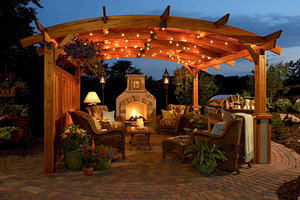
It may go without saying, but you will want to keep in mind the overall size of your structure. A small, 8×10-foot pergola, for example, may not be large enough to provide shade for a large outdoor living area, as your shade profile may be smaller than your actual structure depending on the angle of the sun. A smaller size may be sufficient for a smaller patio seating area but if you are looking for coverage on a large outdoor living & dining area, the larger the structure, the better coverage you will get.
While there are plenty of options (and reasons) to look for an aesthetically pleasing pergola. You have options for pergolas that create both style and shade! From retractable canopies and shade cloths, to climbing plants, solar panels and louvred pergolas made for shade, there are a variety of ways a pergola can be a fantastic shade structure for your home!
In your search for the perfect shade pergola, check out these louvred options made for low maintenance, shade, high winds and comes with a lifetime warranty!


